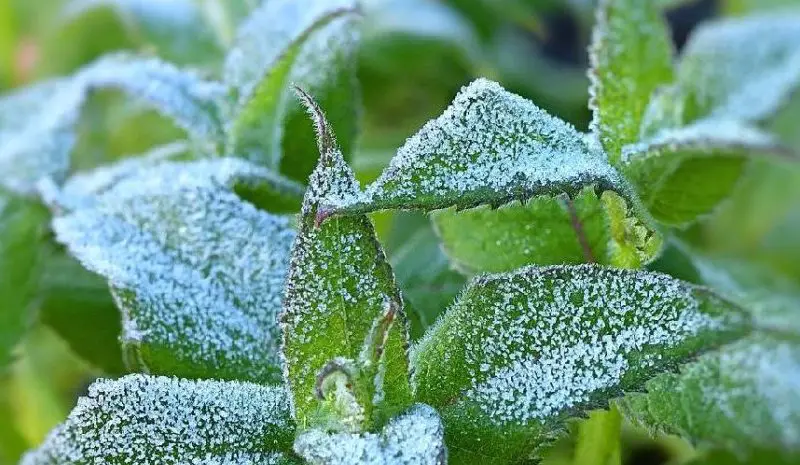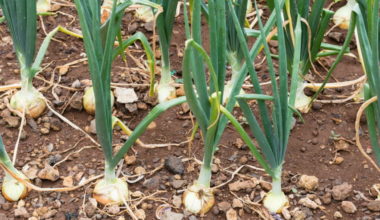To prevent the root system of the plants from dying or the clay pots from bursting under the action of the frost, it is important to protect the pots that host the plants during the winter.
Contents
Why protect your container plants in winter?
First of all, from the cold, from the snow and from the frost too. Indeed, the drop in temperature will hinder the good development of plants, which, since their sap has gone down at the end of autumn, are in dormancy, a slowed down state of life.
Moreover, since diseases reach a peak at the end of summer, if the plants go to sleep suffering, they will not be able to fight the infection during this very harsh period and will come out of winter, if they manage to do so, in a poor condition. It is therefore essential to take care of them and protect them so that they can bloom again in spring. And so on into the next winter.
When do you have to protect your container plants?
When winter approaches, you are afraid that the plants in the garden will be damaged by the cold. However, it is necessary to wait for the first frosts so that the plants can prepare themselves for the sometimes sub-zero temperatures and go into dormancy.
Trees, shrubs and roses need to be exposed to temperatures between 32°F and 50°F for a few days: cold and frost are important for lignification (plant cells turn into wood) and limit the appearance of harmful insects.
The ideal is to put the protections in place as late as possible in the season (mid-November) and to remove them as soon as the temperature rises a little. When to uncover them? In the same way, you should not wait until it is too hot to remove the protections. At the first thaw of the ground (March or April depending on the climate), you can uncover them, except if the temperatures are too unstable between day and night.
Indeed, a protection maintained too long risks to support a rotting of the plant.
Note that you can give the plants a little boost at the end of the summer, thanks to a dose of fertilizer and by covering them with a winter veil for example, which will last until the end of February.
10 ways to protect plants in containers in winter
1. The veranda
Install your fragile plants in an unheated veranda.
2. In the garage
Install your plants in a frost-free, dry room with a window. The garage and the basement are perfectly suitable.
3. In the laundry room
If you have a laundry room, this is also suitable. Be careful, the temperature must be between 32 and 59°F.
4. In the dark
Pelargonium, fuchsia, oleander, dahlias, gladioli: some plants can withstand the dark and will find a place in the cellar (if the air is dry).
5. Plates under the pots
To insulate plants from the cold of the ground, install polystyrene sheets under the pots.
6. Covering the pots
Cover the pots to keep them warm.
7. Do not water (too much)
Don’t water fragile plants during frosty periods.
8. Winter cover
In regions subject to winter frost, cover your Mediterranean plants with winter sails.
9. Avoid the wind
Place plants against walls to protect them as much as possible from wind.
10. Mulch
Plants can be protected at the root with a plant mulch (bark, flax mulch, a carpet of dead leaves, compost, manure). Choose plant mulches.
Protecting pots in the garden
When the pots are too heavy or when it is not possible, in the absence of a suitable room, to put them inside, several precautions can be taken:
Avoid draughts
Wind increases the consequences of cold on plants and shrubs.
For pots that must remain in place, install a windbreak on the side facing the prevailing winds.
A canisse or woven panels are ideal, as long as they are securely fastened to stakes that are firmly anchored in the ground.
Insulate the pots against frost
Remove the saucers and place your pots on wooden wedges.
The rainwater will run off more quickly and will not turn into ice at the first frost. The roots will be preserved and the pot, especially if it is made of terra cotta, will have less risk of bursting or cracking.
Moreover, on tiled or concrete terraces, the soil can become a cold accumulator and transmit it to the plants through contact. In addition to wedges, insulation at ground level made of straw or polystyrene is then welcome.
Be careful with clay pots
Pay special attention to your clay pots. This natural material has the particularity of absorbing humidity and the risks of bursting are increased compared to plastic or resin pots. They must therefore be protected as a priority, as soon as the first risks of frost appear.
The shape of the pots also influences their resistance to frost: a flared shape allows the frozen soil to rise up without exerting pressure on the sides.
Protecting outdoor pots
Pots that must be kept outside because they are too heavy to be moved in and out of the house or because there is no shelter, can be protected from frost in several ways.
Raising the pots
Place the pots on wooden wedges (without the saucers):
the rainwater received can flow freely and will not be trapped under the pots in case of frost;
the pot is no longer in contact with the ground, which can be a cold accumulator and a vector of cold, such as concrete, tiles or stone slabs;
the space freed between the ground and the pot can be covered with an insulating layer of straw or polystyrene.
Covering the pots
Making a pot cover for winter is not complicated (read: Protection against the cold):
bubble plastic: the air-filled bubbles are good thermal insulation.
straw and burlap sleeve: wrap the pots in straw, starting from the bottom, and wrap it loosely with burlap.
Straw mat: pack a thick layer of straw between two strips of chicken wire, then surround the pot (and plant). Fill in the gaps with straw and tie everything together.
cardboard, fabric, winter fleece: if you don’t have straw or bubble wrap, any kind of insulating material can be recycled into a coat. Several layers can be superimposed to reinforce the insulating power of the blanket, and to be able to remove it, little by little, as the risk of frost recedes (read: Wintering plants).
Protect from the wind
The presence of wind cools the atmosphere significantly. If you cannot move the pots, install a windbreak, braided panels or a canisse, held in place by stakes driven into the ground, in order to reduce its speed.
Gauging
Remove plants from their pots in the fall and gauge them in a sheltered area of the garden, then shelter the pots.








